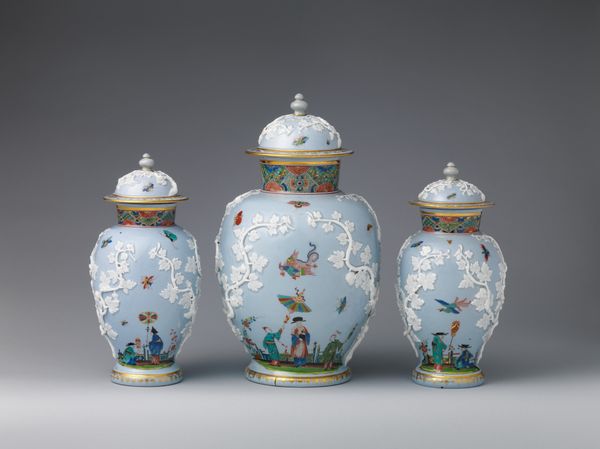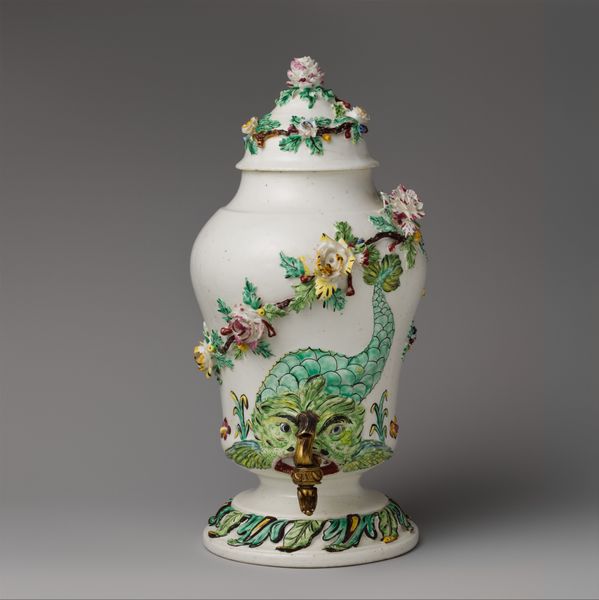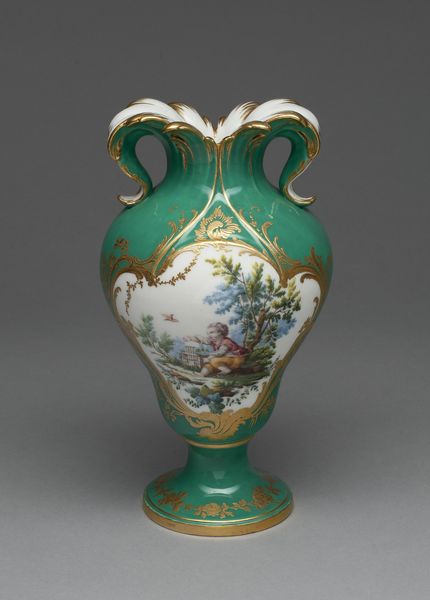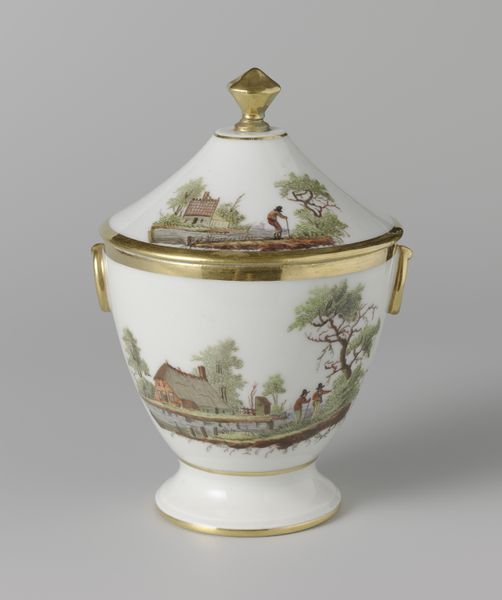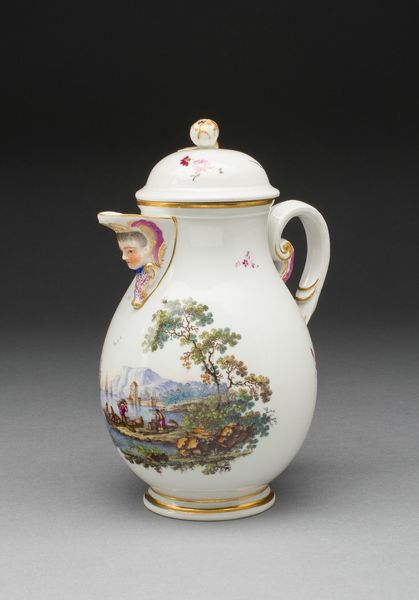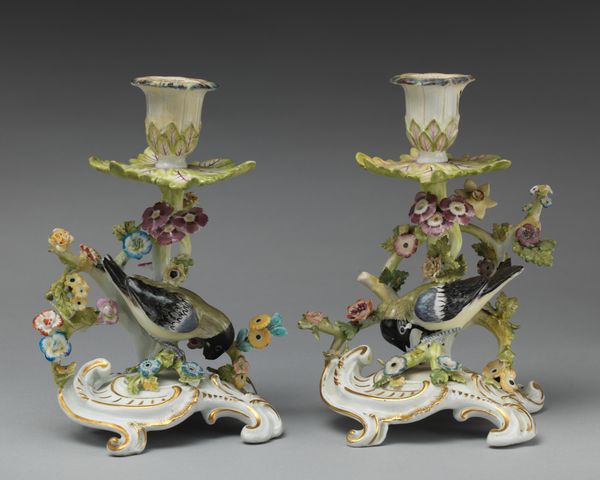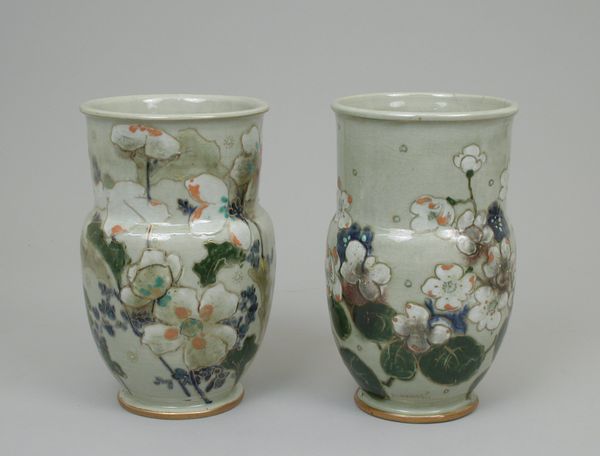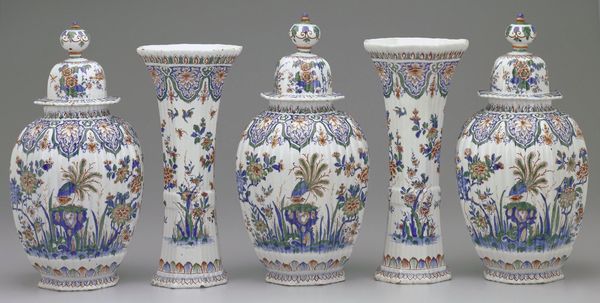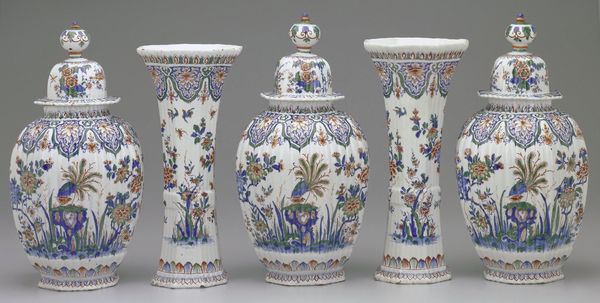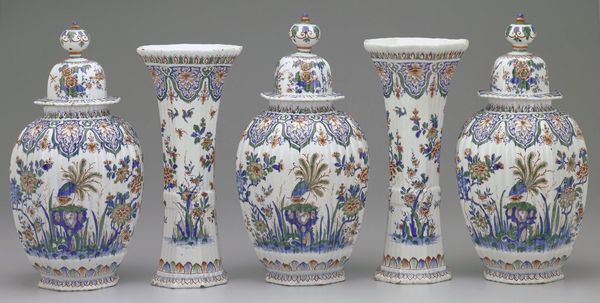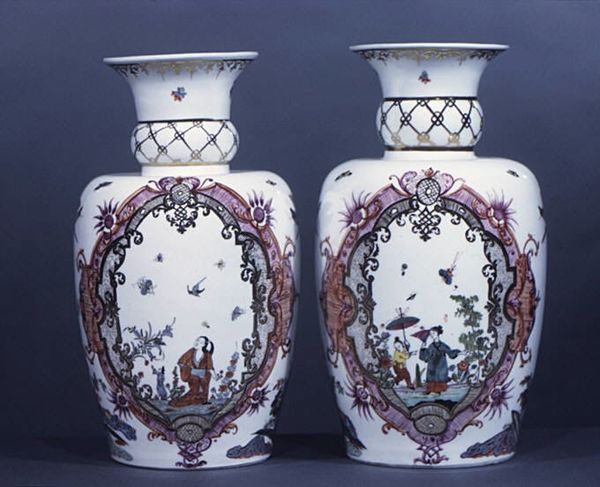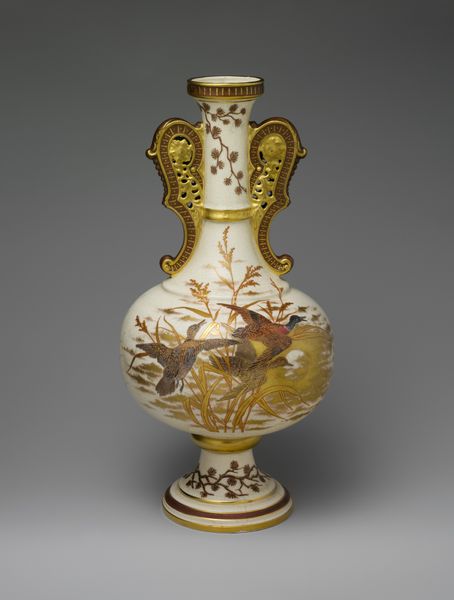
Dimensions: Height (.46): 17 3/16 in. (43.7 cm); Height (.47): 17 3/8 in. (44.1 cm)
Copyright: Public Domain
Curator: These lovely potpourri vases with covers, made sometime between 1767 and 1779, grace us with their presence. Editor: My first impression is their Rococo playfulness. That pale blue glaze, contrasted with the warmer tones of the figures and landscapes. It feels at once precious and somehow a bit melancholy. Curator: Precious, definitely, and crafted with explicit connections to the social context of their time. The figures on the lids, for example, depict Black individuals in rather... subservient poses. Their inclusion speaks volumes about the power dynamics prevalent in the 18th century and how the exotic was often romanticized and objectified. Editor: Absolutely, but look closer at how those scenes are framed—the almost theatrical arrangement of figures within miniature landscape paintings. Note also how those landscapes mirror the forms of the vases themselves: rounded, ornamental, self-contained worlds. This is surface as depth. Curator: The landscapes offer an escape into idealized versions of the natural world for sure, while the sculptural lids simultaneously reinforce existing racial and social hierarchies. They served as luxury items, reflecting a society deeply invested in conspicuous consumption and displays of status. Editor: What intrigues me is how the bright floral embellishments around the potpourri openings work compositionally. They pull the eye upwards, creating a dialogue between the form, function, and decorative surface of the object. Curator: This juxtaposition, almost contradiction between beauty and representation, highlights how decorative arts can also be potent carriers of social ideologies. The act of placing potpourri within vases adorned with these images becomes a statement in itself. Editor: True, and to ignore that formal construction – the choices in palette, balance, rhythm – is to lose insight into the work’s potential impact on contemporary viewers, and what they valued aesthetically and materially. Curator: Precisely. Approaching art, be it pottery or painting, through intersectional lens deepens our awareness of both past and present power struggles. Editor: And unpacking its compositional construction teaches us to “see” in more critical and considered ways.
Comments
No comments
Be the first to comment and join the conversation on the ultimate creative platform.
